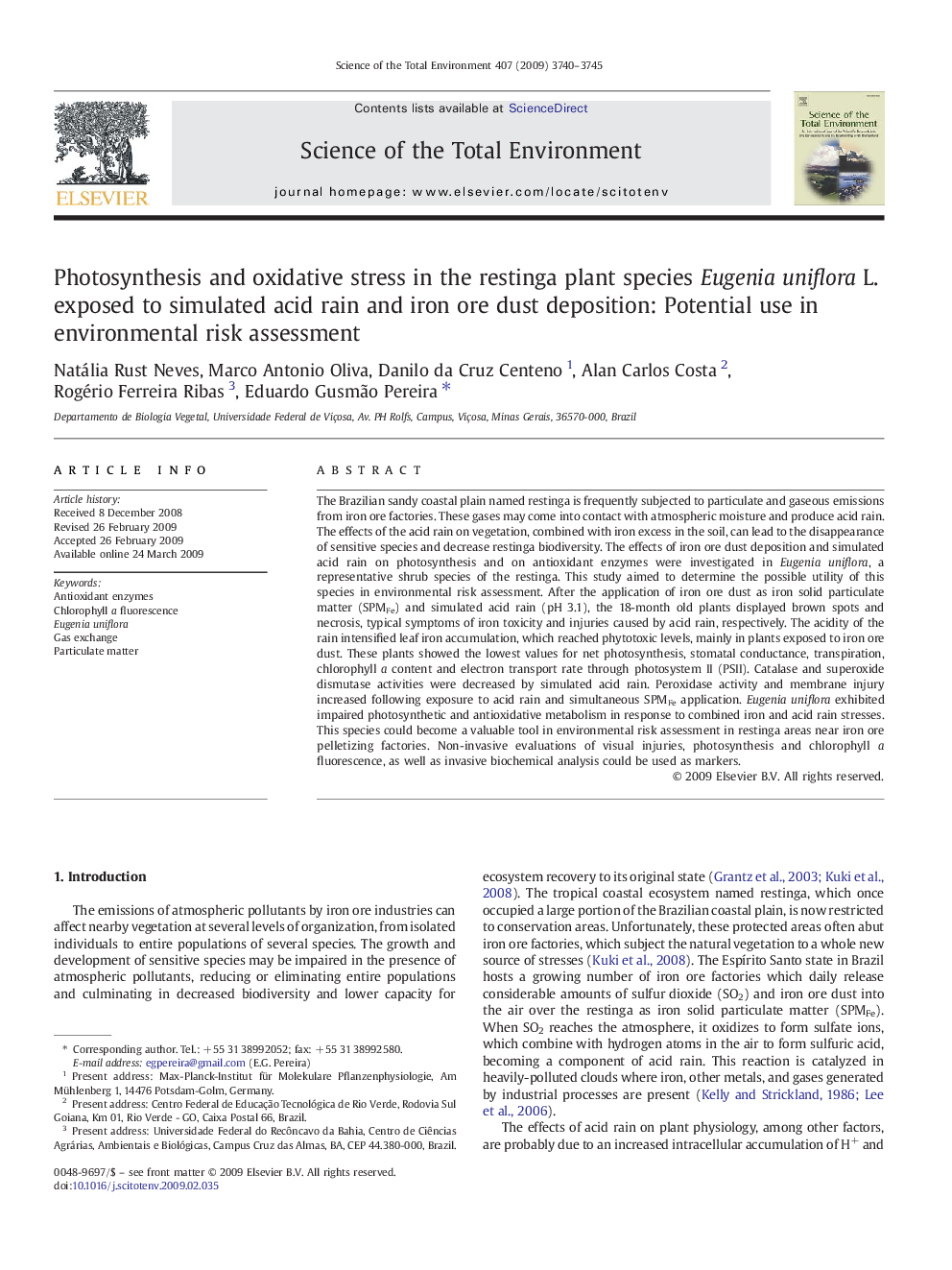| Article ID | Journal | Published Year | Pages | File Type |
|---|---|---|---|---|
| 4431820 | Science of The Total Environment | 2009 | 6 Pages |
The Brazilian sandy coastal plain named restinga is frequently subjected to particulate and gaseous emissions from iron ore factories. These gases may come into contact with atmospheric moisture and produce acid rain. The effects of the acid rain on vegetation, combined with iron excess in the soil, can lead to the disappearance of sensitive species and decrease restinga biodiversity. The effects of iron ore dust deposition and simulated acid rain on photosynthesis and on antioxidant enzymes were investigated in Eugenia uniflora, a representative shrub species of the restinga. This study aimed to determine the possible utility of this species in environmental risk assessment. After the application of iron ore dust as iron solid particulate matter (SPMFe) and simulated acid rain (pH 3.1), the 18-month old plants displayed brown spots and necrosis, typical symptoms of iron toxicity and injuries caused by acid rain, respectively. The acidity of the rain intensified leaf iron accumulation, which reached phytotoxic levels, mainly in plants exposed to iron ore dust. These plants showed the lowest values for net photosynthesis, stomatal conductance, transpiration, chlorophyll a content and electron transport rate through photosystem II (PSII). Catalase and superoxide dismutase activities were decreased by simulated acid rain. Peroxidase activity and membrane injury increased following exposure to acid rain and simultaneous SPMFe application. Eugenia uniflora exhibited impaired photosynthetic and antioxidative metabolism in response to combined iron and acid rain stresses. This species could become a valuable tool in environmental risk assessment in restinga areas near iron ore pelletizing factories. Non-invasive evaluations of visual injuries, photosynthesis and chlorophyll a fluorescence, as well as invasive biochemical analysis could be used as markers.
